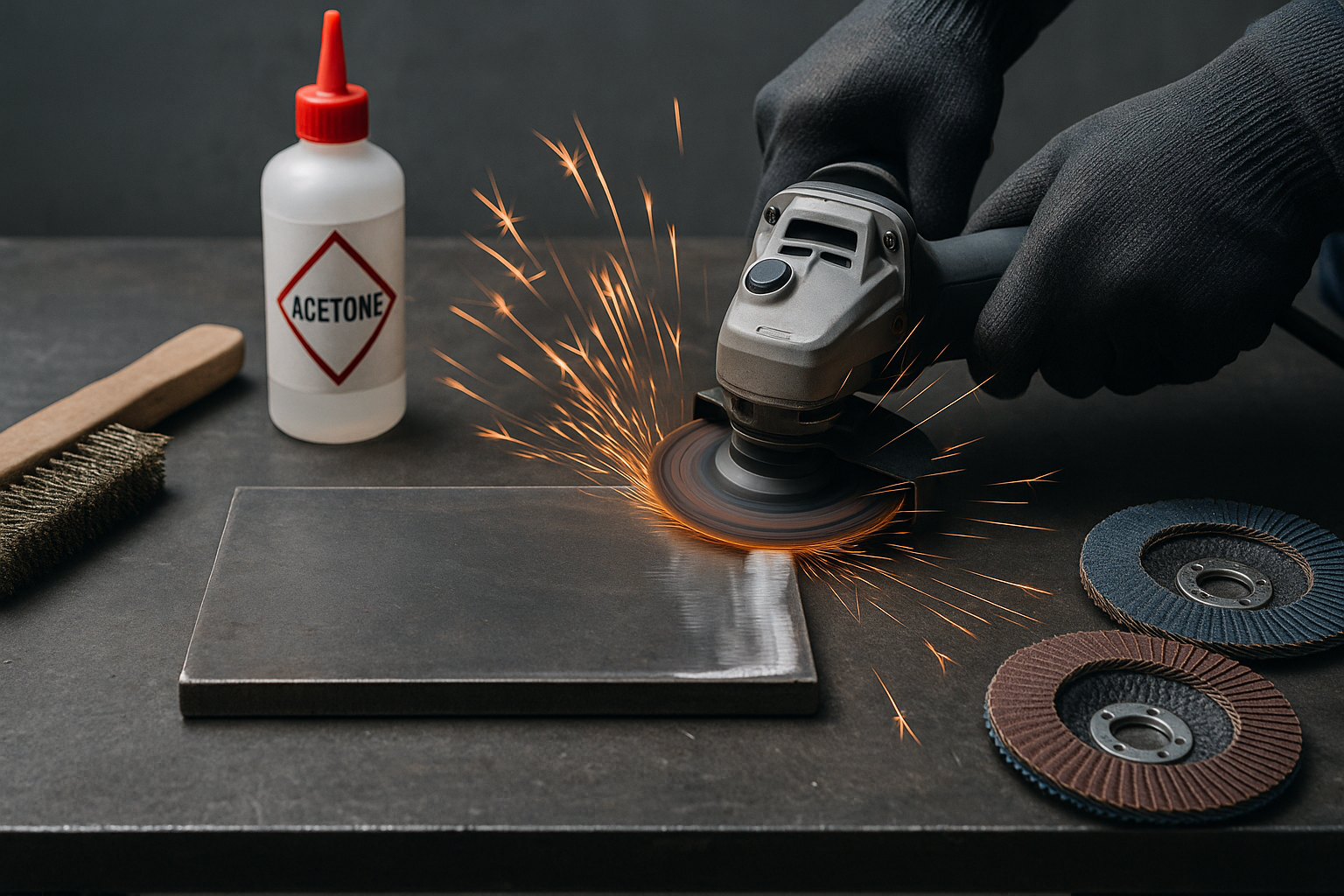Proper metal prep is the difference between a clean, strong weld and fighting porosity, inclusions, and arc instability. This guide breaks down exactly how to clean, grind, degrease, and fit-up steel, stainless, and aluminum so you can weld with fewer defects and less rework.
Key Takeaways
- Clean metal = fewer porosity and arc-start issues. Remove mill scale, rust, paint, oil, and coatings.
- Use the right abrasives: flap discs for beveling, hard wheels for aggressive cleaning, and stainless-only tools for stainless.
- Fit-up accuracy determines distortion control and penetration.
- Always check safety: ANSI Z87.1 eye protection, proper ventilation, and PPE.
- Improper prep is one of the Top 3 causes of weld failure per AWS D1.1 commentary.
Where to Buy (Tools for Metal Prep)
Arc Weld Store:
40-grit flap discs — Heavy removal
$86.93 In Stock
Weldcote 10668 Flap Discs C-Prime Ceramic 4.5" 40 Grit XL 7/8" Arbor 10 Pack T27 13300 RPM




